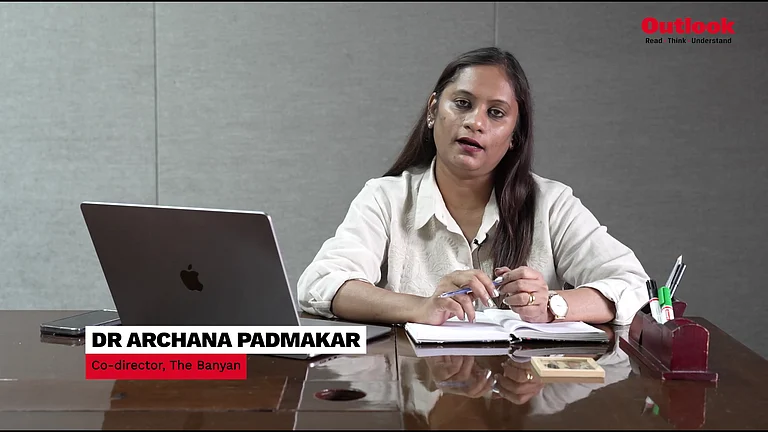 Summary of this article Summary of this article
- India’s community mental health services began at NIMHANS in 1975, leading to the DMHP, now covering 95 per cent of districts.
- Policies like the Mental Healthcare Act 2017 and Tele-MANAS (2022) have expanded access through digital and primary care platforms.
- Shortages, stigma, and fund underuse remain major hurdles; experts call for stronger training, evaluation, and support.
The first initiative of community-based services in India was launched in NIMHANS in the year 1975. As part of this initiative, the Centre for Advanced Research on Community Mental Health became operational. The community mental health programme was initiated in the catchment area of one lakh population. The aim was to provide continuous mental health services in primary care settings, train mental health professionals in community mental health, and primary care personnel in delivering mental health care, initiate a homecare programme for the severely mentally ill and lastly, to assess the impact of continuous mental health services in the primary health centre catchment area.
The district of Bellary in northern Karnataka was the first in the country where the District Mental Health Programme (DMHP) was rolled out as a pilot, tested between 1985 and 1990. The approach was to deliver mental healthcare services in primary care settings through the primary healthcare personnel in the district and to monitor the same programme using administrative infrastructure of health in the district. The DMHP consists of psychiatrists, psychologists, social workers, nurses, pharmacists and support staff to provide mental health services at the district headquarters hospital. The team was involved in training primary care personnel of the entire district and also in providing support to the personnel by visiting the primary healthcare centre as well as discussing cases, clarifying doubts, and identifying patients who require higher level of care so that they could be shifted to the district hospital for inpatient care. The DMHP was operational for a period of five years. Simple records were developed to capture the data and this was uploaded on the database. The data generated was analysed periodically in order to understand the correctness of diagnosis, coverage for priority mental disorders across the primary health centres, outcome of intervention provided by the primary care staff, and also to understand the impact on integrating mental health into general health services as well as the coverage for priority mental healthcare in the entire district.
[url=]Related Content[/url]
  Watch | Sudhir Dhawale Spoke With Outlook About Mental Health Crisis in Indian Prisons Watch | Sudhir Dhawale Spoke With Outlook About Mental Health Crisis in Indian Prisons
  Why Awareness Of Mental Health Disorders Will Never Be Enough Without Improved Care Services Why Awareness Of Mental Health Disorders Will Never Be Enough Without Improved Care Services
  Mental Health In India: A Crisis In The Shadows Mental Health In India: A Crisis In The Shadows
  In Uttar Pradesh, Dawa And Dua Go Hand In Hand In Uttar Pradesh, Dawa And Dua Go Hand In Hand
[url=]Related Content[/url]
  Watch | Sudhir Dhawale Spoke With Outlook About Mental Health Crisis in Indian Prisons Watch | Sudhir Dhawale Spoke With Outlook About Mental Health Crisis in Indian Prisons
  Why Awareness Of Mental Health Disorders Will Never Be Enough Without Improved Care Services Why Awareness Of Mental Health Disorders Will Never Be Enough Without Improved Care Services
  Mental Health In India: A Crisis In The Shadows Mental Health In India: A Crisis In The Shadows
  In Uttar Pradesh, Dawa And Dua Go Hand In Hand In Uttar Pradesh, Dawa And Dua Go Hand In Hand
 
Watch | The Banyan's Dr Archana Padmakar: 14 Years Transforming Mental Health Care
BY Outlook News Desk |